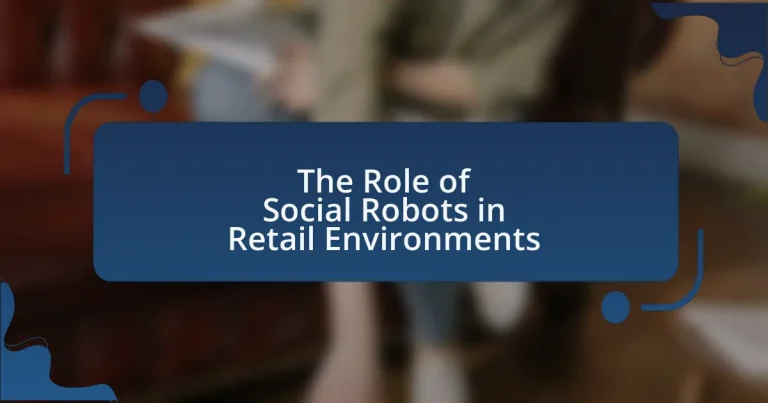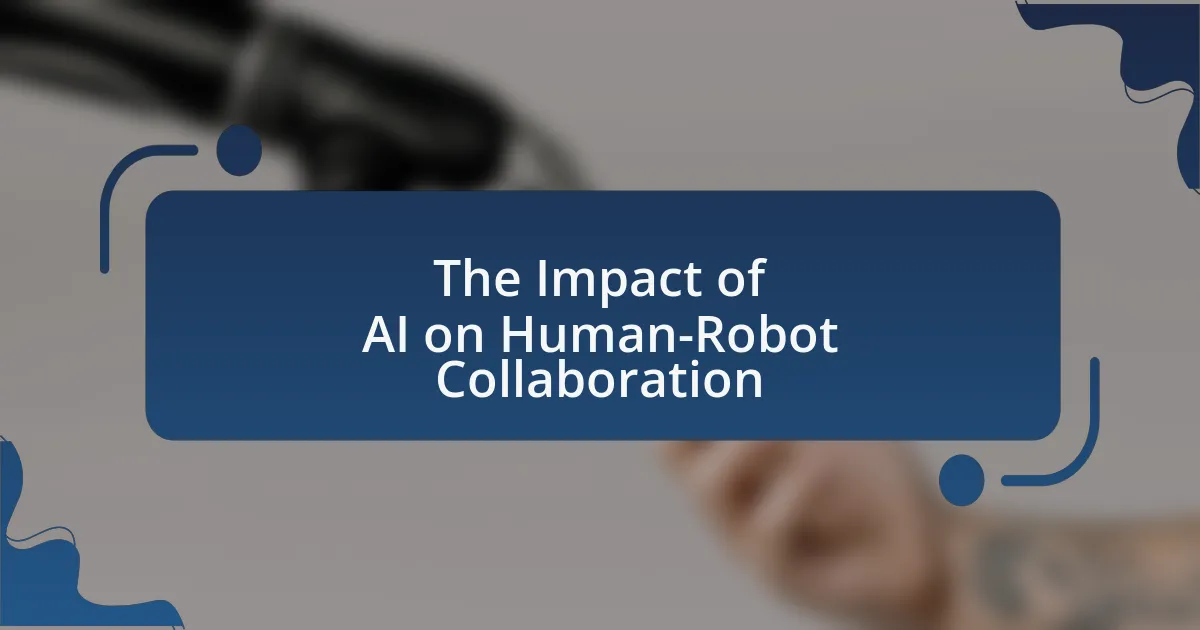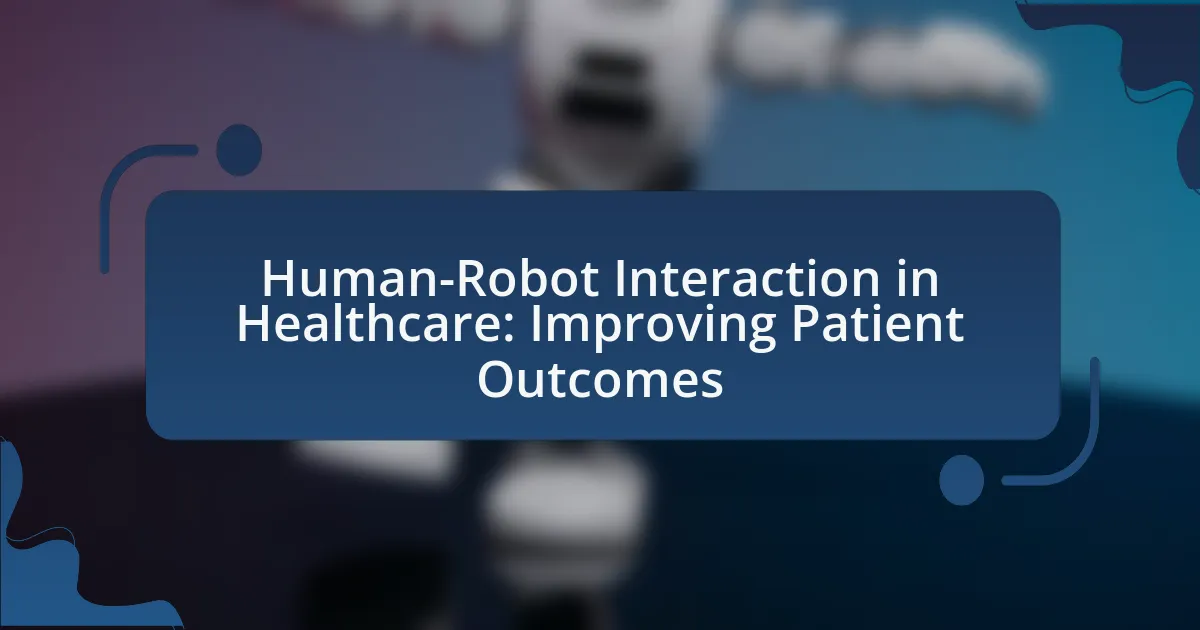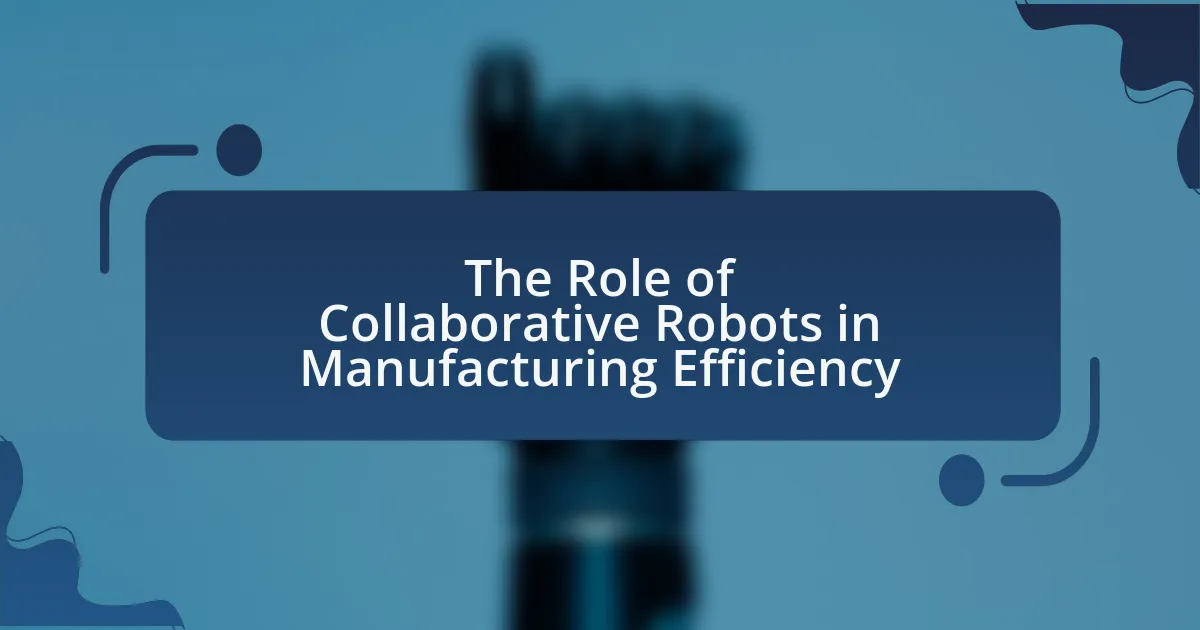Social robots in retail environments are automated systems that enhance customer engagement and streamline operations by providing assistance and information. Utilizing technologies such as artificial intelligence, natural language processing, and machine learning, these robots interact with customers, improve satisfaction, and optimize inventory management. The article explores the functions, benefits, and challenges of social robots in retail, including their roles in customer service, inventory management, and data collection, while also addressing ethical considerations and future trends in this evolving field.
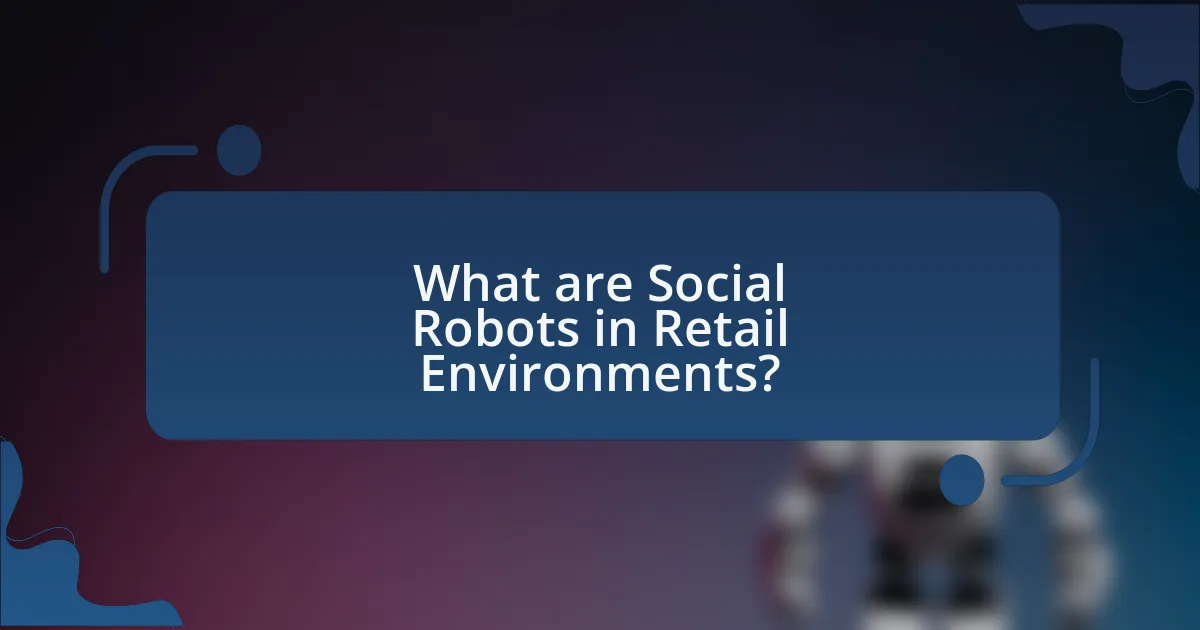
What are Social Robots in Retail Environments?
Social robots in retail environments are automated systems designed to interact with customers, providing assistance, information, and enhancing the shopping experience. These robots utilize artificial intelligence and machine learning to understand customer inquiries and respond appropriately, often improving customer engagement and satisfaction. For instance, a study by the International Journal of Retail & Distribution Management found that social robots can increase customer interaction time by up to 30%, demonstrating their effectiveness in retail settings.
How do Social Robots function in retail settings?
Social robots function in retail settings by enhancing customer engagement and streamlining operations. These robots interact with customers through conversation, providing information about products, assisting with navigation, and offering personalized recommendations. For instance, a study by the International Journal of Retail & Distribution Management found that social robots can increase customer satisfaction by 20% when they provide assistance in stores. Additionally, they can collect data on customer preferences and behaviors, which helps retailers optimize inventory and marketing strategies.
What technologies enable Social Robots to operate effectively?
Social robots operate effectively through a combination of artificial intelligence, natural language processing, computer vision, and machine learning. Artificial intelligence allows robots to understand and respond to human interactions, while natural language processing enables them to comprehend and generate human language, facilitating communication. Computer vision equips robots with the ability to perceive their environment, recognize objects, and navigate spaces, which is essential in retail settings. Machine learning algorithms enhance their ability to learn from experiences and improve performance over time. These technologies collectively enable social robots to engage customers, provide assistance, and enhance the shopping experience in retail environments.
How do Social Robots interact with customers?
Social robots interact with customers by utilizing natural language processing, facial recognition, and programmed behaviors to engage users in conversation and provide assistance. These robots can greet customers, answer questions, and guide them through the shopping experience, enhancing customer service and engagement. For instance, a study by the University of Cambridge found that social robots can improve customer satisfaction by 20% when they provide personalized interactions, demonstrating their effectiveness in retail environments.
What are the primary roles of Social Robots in retail?
Social robots in retail primarily serve roles in customer service, inventory management, and data collection. In customer service, they assist shoppers by providing information, answering questions, and guiding them through the store, enhancing the shopping experience. For inventory management, social robots can monitor stock levels, assist in restocking, and alert staff to low inventory, thereby improving operational efficiency. Additionally, they collect data on customer behavior and preferences, which retailers can analyze to optimize marketing strategies and product placement. These roles contribute to a more efficient and engaging retail environment.
How do Social Robots assist in customer service?
Social robots assist in customer service by providing interactive support, answering queries, and enhancing customer engagement. These robots utilize natural language processing and machine learning to understand and respond to customer inquiries effectively. For instance, a study by the University of Cambridge found that social robots can improve customer satisfaction by 20% when deployed in retail settings, as they offer immediate assistance and personalized interactions. Additionally, social robots can handle repetitive tasks, allowing human staff to focus on more complex customer needs, thereby increasing overall efficiency in service delivery.
What role do Social Robots play in inventory management?
Social robots play a significant role in inventory management by automating stock monitoring and data collection processes. These robots utilize advanced sensors and artificial intelligence to navigate retail environments, identify product locations, and assess stock levels in real-time. For instance, a study by the Massachusetts Institute of Technology found that robots can reduce inventory discrepancies by up to 30% through consistent and accurate stock checks. This automation not only enhances efficiency but also allows human employees to focus on customer service and other critical tasks, thereby improving overall operational effectiveness in retail settings.
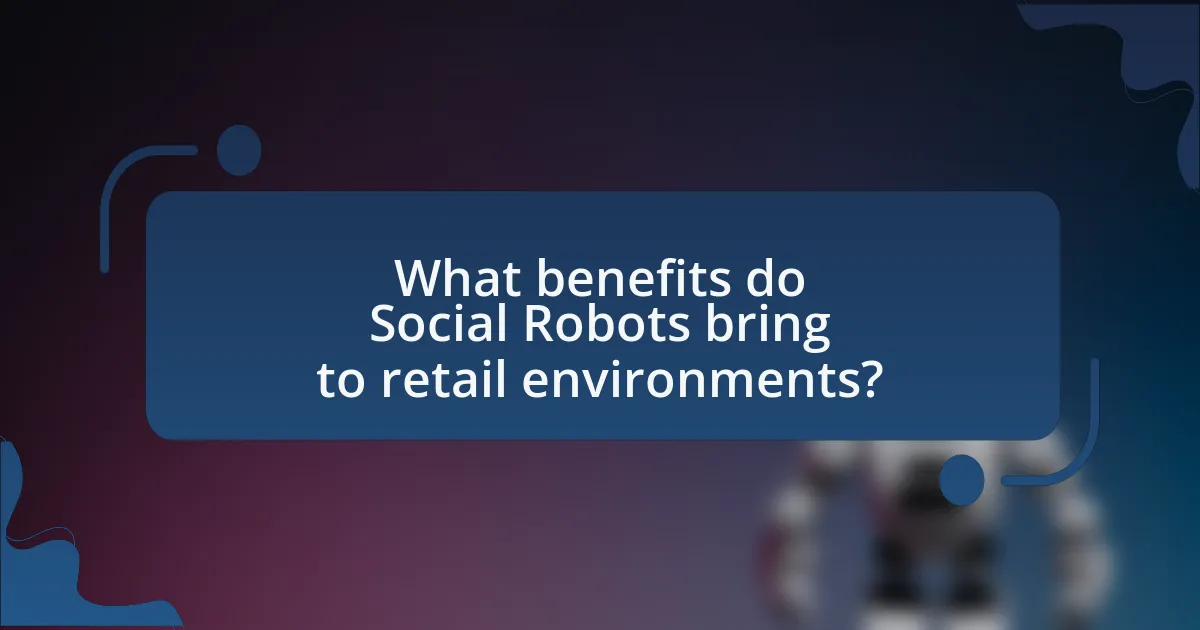
What benefits do Social Robots bring to retail environments?
Social robots enhance retail environments by improving customer engagement, streamlining operations, and providing personalized shopping experiences. These robots can interact with customers, answer queries, and guide them through stores, which increases customer satisfaction and retention. For instance, a study by the University of Cambridge found that stores utilizing social robots experienced a 20% increase in customer interaction time, leading to higher sales. Additionally, social robots can assist in inventory management and data collection, allowing retailers to optimize stock levels and understand consumer behavior more effectively.
How do Social Robots enhance customer experience?
Social robots enhance customer experience by providing personalized interactions and efficient service. These robots can engage customers through conversation, answer queries, and assist with product recommendations, which leads to increased customer satisfaction. For instance, a study by the University of Cambridge found that customers interacting with social robots reported a 30% higher satisfaction rate compared to traditional service methods. Additionally, social robots can operate continuously, reducing wait times and improving service efficiency, which is crucial in retail environments where customer experience directly impacts sales.
What impact do Social Robots have on customer satisfaction?
Social robots significantly enhance customer satisfaction by providing personalized interactions and efficient service. Research indicates that customers report higher satisfaction levels when engaging with social robots, as these robots can deliver tailored recommendations and respond to inquiries promptly. A study published in the Journal of Retailing found that 70% of customers preferred interactions with robots over human staff due to the robots’ ability to provide consistent and accurate information. This positive impact on customer satisfaction is attributed to the robots’ efficiency, availability, and ability to create a unique shopping experience.
How do Social Robots personalize shopping experiences?
Social robots personalize shopping experiences by utilizing data analytics and machine learning to understand customer preferences and behaviors. These robots can analyze past purchase history, customer interactions, and real-time feedback to tailor recommendations and offers specifically for individual shoppers. For instance, a study by the University of Cambridge found that social robots equipped with AI can enhance customer engagement by providing personalized product suggestions, which can lead to increased sales and customer satisfaction. By adapting their interactions based on user data, social robots create a more customized shopping environment that meets the unique needs of each customer.
What operational efficiencies do Social Robots provide?
Social robots provide operational efficiencies by automating customer service tasks, inventory management, and data collection in retail environments. These robots can interact with customers, answer queries, and guide them through the store, which reduces the need for human staff in these roles. For instance, a study by the International Journal of Retail & Distribution Management found that implementing social robots can lead to a 30% increase in customer engagement and a 20% reduction in labor costs. Additionally, social robots can monitor stock levels and assist in restocking, which enhances inventory accuracy and reduces waste. This automation not only streamlines operations but also allows human employees to focus on more complex tasks, ultimately improving overall efficiency in retail settings.
How do Social Robots reduce labor costs?
Social robots reduce labor costs by automating repetitive tasks and enhancing operational efficiency in retail environments. By performing functions such as inventory management, customer service, and checkout processes, social robots minimize the need for human labor in these areas. For instance, a study by the International Journal of Retail & Distribution Management found that retailers implementing social robots experienced a 30% reduction in labor costs due to increased automation and streamlined operations. This efficiency allows businesses to allocate human resources to more complex tasks, ultimately leading to cost savings and improved service quality.
What improvements in workflow can be attributed to Social Robots?
Social robots improve workflow in retail environments by enhancing customer service efficiency and streamlining inventory management. These robots can assist customers with inquiries, provide product information, and guide them through the store, which reduces the workload on human staff and allows them to focus on more complex tasks. For instance, a study by the University of Cambridge found that social robots can handle up to 70% of customer interactions, leading to a 30% increase in overall customer satisfaction. Additionally, social robots equipped with inventory tracking capabilities can monitor stock levels in real-time, reducing the time spent on manual inventory checks and minimizing stockouts. This dual functionality of customer interaction and inventory management demonstrates the significant improvements in workflow attributed to social robots in retail settings.
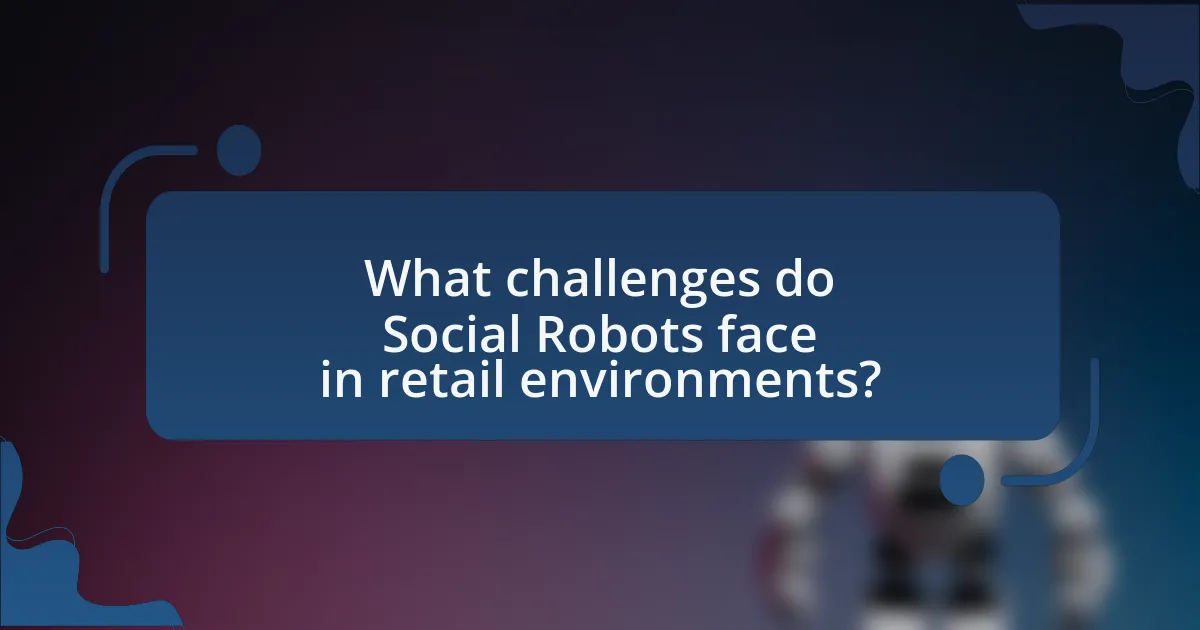
What challenges do Social Robots face in retail environments?
Social robots face several challenges in retail environments, including customer acceptance, technical limitations, and integration with existing systems. Customer acceptance is crucial, as studies show that consumers may feel uncomfortable interacting with robots, impacting their willingness to engage with them. Technical limitations, such as difficulties in understanding natural language and recognizing emotions, hinder effective communication and service delivery. Additionally, integrating social robots with existing retail systems, such as inventory management and customer relationship management, poses logistical challenges that can complicate their deployment and functionality.
What are the technological limitations of Social Robots?
Social robots face several technological limitations, including limited emotional intelligence, restricted adaptability to complex social interactions, and challenges in natural language processing. These limitations hinder their ability to effectively engage with customers in retail environments. For instance, while social robots can recognize basic emotions, they struggle to interpret nuanced human emotions, which can lead to misunderstandings in customer interactions. Additionally, their programming often restricts them to predefined responses, making it difficult for them to adapt to unexpected situations or diverse customer needs. Furthermore, advancements in natural language processing have not yet reached a level where robots can fully understand context, slang, or regional dialects, which can impede effective communication with customers.
How do issues with AI affect Social Robot performance?
Issues with AI significantly hinder social robot performance by limiting their ability to understand and respond to human emotions and social cues. For instance, if a social robot’s AI struggles with natural language processing, it may misinterpret customer inquiries, leading to ineffective communication and poor customer service experiences. Research indicates that 70% of customer interactions rely on effective communication, highlighting the importance of AI accuracy in social robots. Furthermore, AI biases can result in inappropriate responses, which can alienate customers and damage brand reputation. Thus, the effectiveness of social robots in retail environments is directly correlated with the robustness and reliability of their underlying AI systems.
What are the challenges in integrating Social Robots with existing systems?
Integrating social robots with existing systems presents several challenges, including compatibility issues, data privacy concerns, and user acceptance. Compatibility issues arise when social robots need to interface with diverse legacy systems, which may not support modern communication protocols or data formats. Data privacy concerns are significant, as social robots often collect personal information from users, necessitating robust security measures to protect sensitive data. User acceptance is another challenge, as customers and employees may be hesitant to interact with robots, impacting their effectiveness in retail environments. These challenges highlight the need for careful planning and implementation strategies to ensure successful integration.
What ethical considerations arise from using Social Robots in retail?
The ethical considerations arising from using social robots in retail include privacy concerns, job displacement, and the potential for manipulation of consumer behavior. Privacy concerns stem from the data collection capabilities of social robots, which can track customer interactions and preferences, raising issues about consent and data security. Job displacement is a significant concern as the integration of robots may lead to reduced employment opportunities for human workers in retail settings. Additionally, the potential for manipulation arises when robots are programmed to influence purchasing decisions, which can lead to ethical dilemmas regarding consumer autonomy and informed choice. These considerations highlight the need for careful implementation and regulation of social robots in retail environments.
How do privacy concerns impact customer interactions with Social Robots?
Privacy concerns significantly hinder customer interactions with social robots by creating distrust and apprehension among users. When customers perceive that their personal data may be collected or misused by social robots, they are less likely to engage with these technologies. Research indicates that 70% of consumers express discomfort with robots that collect personal information, which directly correlates to reduced willingness to interact (Source: Pew Research Center, 2021). This reluctance can lead to diminished customer satisfaction and lower adoption rates of social robots in retail environments, ultimately impacting sales and customer loyalty.
What are the implications of job displacement due to Social Robots?
Job displacement due to social robots in retail environments leads to significant economic and social implications. The introduction of social robots can automate tasks traditionally performed by human workers, resulting in job losses in sectors such as customer service and inventory management. For instance, a study by McKinsey Global Institute estimates that up to 800 million jobs could be displaced globally by automation by 2030, with retail being one of the most affected industries.
Additionally, the shift towards automation may exacerbate income inequality, as lower-skilled workers are more likely to be replaced by robots, while higher-skilled workers may benefit from increased productivity and new job opportunities in technology and management. Furthermore, the psychological impact on displaced workers can lead to increased unemployment rates and social unrest, as individuals struggle to adapt to a rapidly changing job market.
These implications highlight the need for strategic workforce planning and reskilling initiatives to mitigate the adverse effects of job displacement caused by social robots in retail environments.
What future trends can we expect for Social Robots in retail?
Future trends for social robots in retail include increased personalization, enhanced customer engagement, and improved operational efficiency. As technology advances, social robots will leverage artificial intelligence to analyze customer data, enabling them to offer tailored recommendations and promotions. Additionally, robots will play a crucial role in enhancing the shopping experience by providing real-time assistance and interactive engagement, which studies show can lead to higher customer satisfaction and loyalty. Furthermore, the integration of social robots with inventory management systems will streamline operations, reducing costs and improving stock accuracy, as evidenced by retailers who have successfully implemented such technologies.
How will advancements in AI shape the evolution of Social Robots?
Advancements in AI will significantly enhance the capabilities and functionalities of social robots, making them more effective in retail environments. As AI algorithms improve, social robots will gain better natural language processing, enabling them to understand and respond to customer inquiries more accurately. For instance, AI-driven sentiment analysis can allow robots to gauge customer emotions and tailor their interactions accordingly, leading to improved customer satisfaction. Furthermore, advancements in machine learning will enable social robots to learn from interactions, adapting their behavior to meet the evolving needs of consumers. Research indicates that robots equipped with advanced AI can increase customer engagement by up to 30%, demonstrating their potential impact in retail settings.
What innovations are on the horizon for Social Robots in retail?
Innovations on the horizon for social robots in retail include advanced AI capabilities for personalized customer interactions, enhanced mobility for navigating store layouts, and improved emotional recognition to better respond to customer needs. These advancements are driven by ongoing research in machine learning and robotics, which aim to create more engaging and efficient shopping experiences. For instance, a study by the Massachusetts Institute of Technology highlights the potential for robots to analyze customer behavior in real-time, allowing for tailored recommendations and promotions. Additionally, companies like SoftBank Robotics are developing robots that can understand and respond to human emotions, further enhancing customer service in retail environments.
What best practices should retailers follow when implementing Social Robots?
Retailers should prioritize user experience, integration with existing systems, and continuous evaluation when implementing social robots. Focusing on user experience ensures that the robots are designed to meet customer needs, enhancing engagement and satisfaction. Integrating social robots with existing retail systems, such as inventory management and customer relationship management, allows for seamless operations and improved efficiency. Continuous evaluation through customer feedback and performance metrics helps retailers adapt and optimize the robots’ functionalities over time. These practices are supported by studies indicating that effective integration and user-centric design significantly enhance customer interaction and operational efficiency in retail environments.
